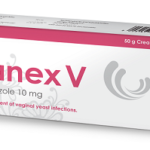Can Adults Use Desitin For Yeast Infections?

What is a yeast infection?
Candidiasis is an infection caused by a yeast (a type of fungus) called Candida. Candida normally lives inside the body (in places such as the mouth, throat, gut, and vagina) and on the skin without causing any problems. Sometimes Candida can multiply and cause an infection if the environment inside the vagina changes in a way that encourages its growth.
Candidiasis in the vagina is commonly called a “vaginal yeast infection.” Other names for this infection are “vaginal candidiasis,” “vulvovaginal candidiasis,” or “candidal vaginitis.”
The acidic environment of the vagina helps keep yeast from growing. However, if the vagina becomes less acidic, too much yeast can grow and cause a vaginal infection. Yeast infections are common; every 3 out of 4 of women will have one in their lifetime. Half of all women have more than one infection in their lifetime.
Yeast infections can be very uncomfortable but usually aren’t serious. Symptoms include:
• Itching and burning in the vagina and around the vulva (the skin that surrounds your vagina)
• A white vaginal discharge that may look like cottage cheese
• Pain during sexual intercourse
• Swelling of the vulva
• Pain during urination
What is Desitin?
Desitin is a medication is used as a moisturizer to treat or prevent dry, rough, scaly, itchy skin and minor skin irritations (such as diaper rash, skin burns from radiation therapy).
Desitin is used by children to treat diaper rash with a yeast infection, along with proper cleaning of the diaper area and frequent diaper changes. It contains Miconazole an azole antifungal that works by preventing the growth of fungus. Zinc oxide and petrolatum the other ingredients, work by forming a barrier on the skin to protect it from moisture and irritation. This product should not be used long-term or to prevent diaper rash. Unnecessary use or misuse of this product can lead to its decreased effectiveness.
What Form(s) Does Desitin Come In?
• Cream
• Ointment
• Paste
What are Common Desitin Doses?
• Tube 57GM of 13%
• Tube 113GM of 13%
• Tube 28GM of 40%
• Tube 57GM of 40%
• Tube 113GM of 40%
• Jar 454GM of 40%
How long does Desitin take to work?
In a clinical study, 90% of babies with diaper rash had noticeable relief within 12 hours of the use of Desitin Maximum Strength Original Paste. Desitin is also effective in sealing out wetness and irritants that in many cases, diaper rash starts to disappear in hours.

Can adults use Desitin for yeast infection?
Although Desitin may help relieve symptoms of yeast infection in adults, you should not put Desitin on your vagina as doctors do not recommend it for older people. Contact your healthcare provider if you have any symptoms of yeast infection. These symptoms are similar to those of other types of vaginal infections, which are treated with different types of medicines. A healthcare provider can tell you if you have vaginal candidiasis and how to treat it.
A diagnosis of yeast infection begins with your gynecologist taking your medical history and asking about your symptoms. Your doctor can confirm a diagnosis by performing a pelvic exam. During the exam, a speculum is inserted in the vagina to allow the doctor to check for symptoms such as swelling or discharge.
Your doctor may prescribe an appropriate anti-fungal medication to treat the yeast infection. OTC medications for yeast infections usually come in the form of a cream, ointment, or suppository. They’re available at most drug stores or grocery stores.
Some medications only require a 1-day treatment. Others may need to be used for 3 to 7 days. Follow the instructions on the packaging, and don’t stop using the medication early even if your symptoms are gone.
These OTC medications are generally effective for people who have mild infections and don’t get yeast infections often.
While medication is a more proven method of getting rid of an infection, there are some natural and home remedies to try as well.
What are the side effects of Desitin?
Get emergency medical help if you have signs of an allergic reaction: hives; difficulty breathing; swelling of your face, lips, tongue, or throat.
Stop using Desitin and call your doctor at once if you have:
• severe blistering, redness, or irritation of treated skin.
Common side effects may include:
• itching, peeling, or dry skin.
Although the risk of serious side effects is low when Desitin is applied to the skin, side effects can occur if the medicine is absorbed into your bloodstream, including:
• dry mouth, sore tongue, tooth pain, red or swollen gums;
• altered sense of taste;
• nausea, diarrhea; or
• headache.
This is not a complete list of side effects and others may occur. Call your doctor for medical advice about side effects. You may report side effects to FDA at 1-800-FDA-1088.





